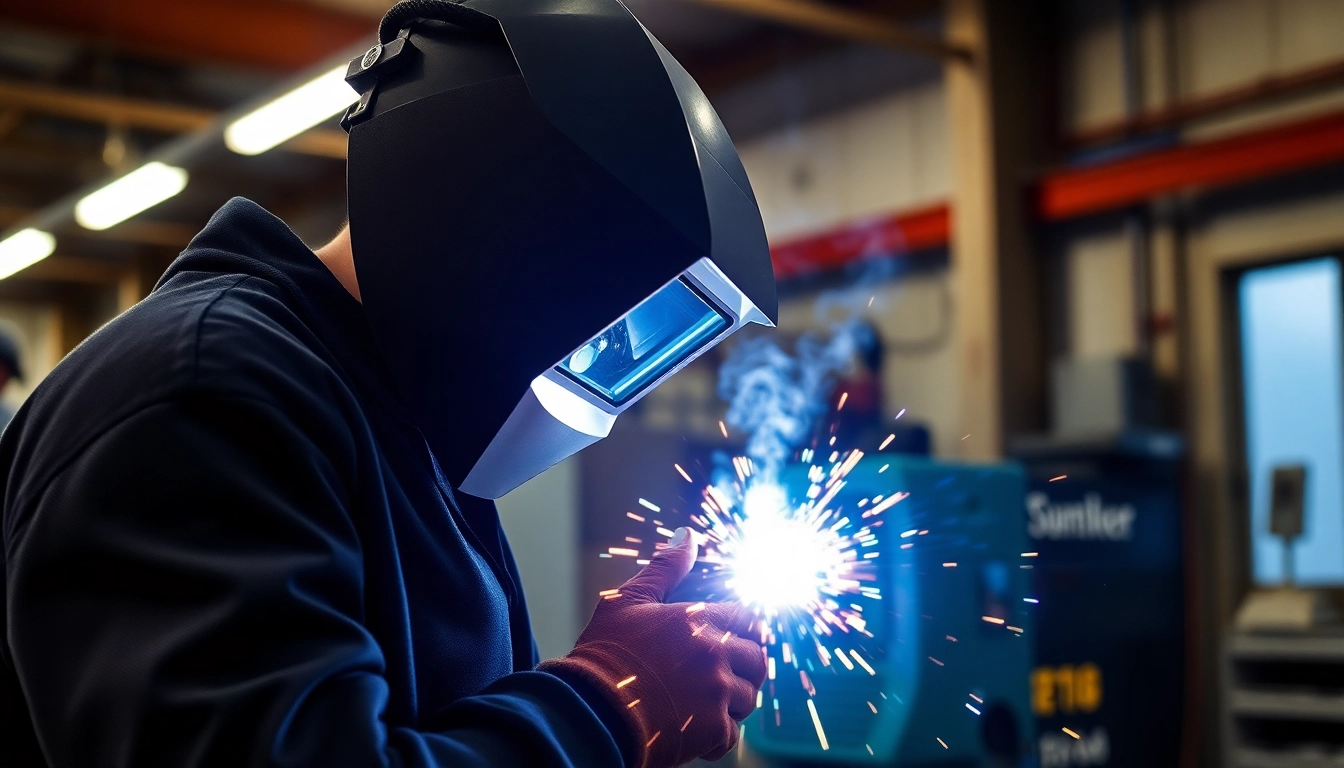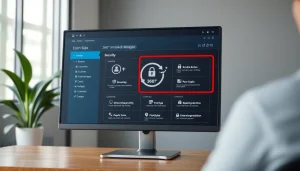Top AC DC TIG Welders: Your Essential Guide for Precision Welding
Understanding AC DC TIG Welders
Tungsten Inert Gas (TIG) welding is renowned for its precision and versatility, particularly when it involves AC DC TIG welders. These machines offer unique capabilities that cater to a variety of welding needs. Whether you’re an experienced welder or a newcomer, understanding the ins and outs of AC DC TIG welders can significantly impact your work quality and efficiency. With the options available, selecting the right equipment is essential for achieving optimal results.
What Is an AC DC TIG Welder?
An ac dc tig welder is a specialized welding machine that can switch between alternating current (AC) and direct current (DC). This flexibility allows welders to work with a broader range of metals, which includes mild steel, stainless steel, and aluminum. AC welding is generally used for materials like aluminum, where surface oxides need to be broken apart to ensure a clean weld, while DC is more suitable for welding metals like stainless steel and carbon steel.
Benefits of Using AC DC TIG Welders
- Versatility: The ability to switch between AC and DC allows welders to handle different materials effectively.
- Precision: TIG welding produces clean, high-quality welds, which are particularly important in applications that require intricate and precise joins.
- Control: Welders have better control over heat settings and can adjust for various material thicknesses.
- Less Distortion: TIG welding produces less thermal distortion compared to other welding methods, making it ideal for delicate materials.
- Efficiency: With the right machine, welders can achieve faster results without sacrificing quality.
Common Applications for AC DC TIG Welding
AC DC TIG welders are widely used in various industries due to their adaptability. Common applications include:
- Aerospace: TIG welding is employed in aerospace components where precision and quality are paramount.
- Automotive: This technique is commonly utilized for joining exhaust systems, fuel tanks, and other critical components.
- Manufacturing: In the manufacturing sector, it is used for creating intricate parts and assemblies.
- Artistic Welding: Many artists and sculptors use TIG welding for metal art due to its precision and clean finish.
- Maintenance and Repair: TIG welding is often selected for repairs on various equipment where precision is needed.
Choosing the Right AC DC TIG Welder
Investing in an AC DC TIG welder requires careful consideration, as the right welder will greatly influence your work efficiency and outcome quality. Below are critical aspects to ponder before making your purchase.
Key Features to Look for in Your Welder
When selecting an AC DC TIG welder, consider the following features:
- Power Output: Look for welders that offer a range of amperage settings, typically between 10 to 250 amps, allowing flexibility for various welding tasks.
- Duty Cycle: The duty cycle indicates how long the welder can operate before needing a cooldown period. A higher duty cycle is ideal for longer projects.
- Portability: If you need to move your welder frequently, consider a lightweight model with a compact design.
- Control Features: Advanced settings like pulse mode can enhance your welding capabilities, especially on thin materials.
- Cooling System: A robust cooling system is crucial for maintaining machine performance during prolonged use.
Popular Brands and Models Overview
Several reputable brands manufacture AC DC TIG welders. A few industry leaders include:
- Miller Electric: Known for its high-quality machines, Miller offers models like the Dynasty series.
- Lincoln Electric: With a solid reputation, Lincoln’s Square Wave® TIG 200 has been a favorite among welding professionals for its reliability and performance.
- Everlast: Their PowerTIG machines are notable for being cost-effective without sacrificing quality. The PowerTIG 210 offers excellent features for first-time users.
- PrimeWeld: This up-and-coming brand offers competitive models such as the TIG225X, suitable for both beginners and seasoned welders.
Price Range and Budget Considerations
AC DC TIG welders come in various price ranges, reflecting their features and capabilities. Typically, you can expect to pay:
- Entry-Level Welders: $500 – $800 for basic models ideal for hobbyists and light use.
- Mid-Range Welders: $800 – $2000 for machines with added features suitable for semi-professional work.
- Professional Welders: $2000 and above for high-performance machines used in commercial applications.
It’s crucial to balance your budget with your welding needs, ensuring that you choose a welder that can perform the tasks required without overspending on unnecessary features.
Setting Up Your AC DC TIG Welder
Once you have your AC DC TIG welder, setting it up correctly is essential for achieving optimal performance. Below is a guide on how to set yours up efficiently.
Essential Equipment for Optimal Performance
In addition to your welder, you’ll need several additional pieces of equipment:
- Protective Gear: Ensure you have a welding helmet, gloves, and protective clothing to safeguard against sparks and heat.
- Welding Supplies: Stock tools such as tungsten electrodes, filler rods, and argon gas cylinders for shielding.
- Ground Clamp: Always have a strong ground clamp to establish a reliable circuit.
- Work Table: A sturdy table or workbench can provide the stability you need during the welding process.
Step-by-Step Setup Guide
- Position Your Welder: Place the welder on a stable and level surface, ensuring access to power and ventilation.
- Connect Argon Tank: Securely attach your argon gas cylinder and check for leaks using soap bubbles.
- Attach Ground Clamp: Fasten the ground clamp to the workpiece appropriately to minimize electrical resistance.
- Configure Electrode and Filler: Choose the appropriate tungsten electrode and filler rod and attach them carefully.
- Set Parameters: Adjust the machine’s settings based on the material type and thickness you’ll be welding.
- Test Run: Perform a test run on scrap material to ensure settings are optimized for your project.
Troubleshooting Common Issues
Even with correct setup, issues can arise. Here are common problems and their solutions:
- Inconsistent Arc: Check your gas flow rate; it should typically be set between 15 to 20 CFH. Ensure the tungsten electrode is correctly sharpened.
- Weak Penetration: Increase the amperage and ensure the tungsten is appropriate for the material thickness.
- Burn Through: Decrease the amperage or move at a faster pace to avoid overheating the base metal.
Advanced Techniques in AC DC TIG Welding
For those looking to elevate their welding skills, mastering advanced techniques can greatly enhance your capability with AC DC TIG welding. Here’s a closer look at specialized techniques.
Mastering Aluminum Welding
Welding aluminum can be particularly challenging due to its thermal properties. Here are some tips for effective aluminum welding with an AC DC TIG welder:
- Clean the Material: Ensure the aluminum is clean. Use a stainless steel brush or chemical cleaner to remove oxides.
- Adjust AC Balance: Set the AC balance to a higher negative setting to improve penetration while still breaking the oxide layer.
- Use Proper Filler Metal: Select a filler rod that matches the aluminum grade you are welding to ensure compatibility and strength.
Special Techniques for Stainless Steel
Welding stainless steel requires precision to maintain its integrity. Consider these suggestions:
- DCEN Welding: Use direct current electrode negative (DCEN) for better heat control and penetration.
- Back Purging: For root passes, back purge with argon to prevent oxidation of the weld during cooling.
- Right Filler Selection: Choose a filler metal that matches the base metal to maintain corrosion resistance.
Safety Precautions and Best Practices
Safety should always be a priority when welding:
- Protective Clothing: Wear flame-resistant clothing to reduce burn risk.
- Ventilation: Ensure your workspace is well-ventilated to avoid inhaling harmful gases.
- Keep a Fire Extinguisher Handy: Always have an appropriate fire extinguisher accessible during welding operations.
Where to Buy AC DC TIG Welders
Now that you’re equipped with knowledge about AC DC TIG welders, it’s important to know where to obtain one. Below are some tips and options for purchasing.
Top Online Retailers for Purchasing
Various online platforms offer a wide range of AC DC TIG welders. Popular retailers include:
- Amazon: A convenient option with extensive customer reviews.
- Welding Supply Websites: Websites like Welding Supplies from IOC and Cyberweld offer a selection of high-quality machines.
- Manufacturer Sites: Directly purchasing from manufacturers like Miller or Lincoln Electric ensures you receive authentic, warranty-backed products.
Comparison of In-Store vs. Online Shopping
When comparing in-store and online shopping, consider the following:
- In-Store: Offers the advantage of seeing the welder firsthand and obtaining immediate assistance from sales staff.
- Online: Provides convenience, a broader selection, and the ability to compare prices with ease.
Customer Reviews and Recommendations
Before committing to a purchase, read customer reviews and recommendations. Engage with communities on platforms like Reddit and local welding forums to gather insights and share experiences with specific models. This can help you make an informed decision based on real-world usage and satisfaction.














Post Comment